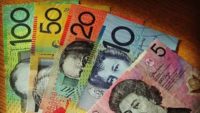In foreign exchange (forex) trading, those who can decipher and capitalise on hidden connections often find success. Behind the fluctuations of currency pairs lies a complex web of relationships that can offer valuable insights into market trends and potential profit opportunities. This is where the concept of forex correlation steps in – a strategy that involves analysing the interdependence between different currency pairs to make more informed trading decisions.
Just as in life, where relationships between individuals can shape actions and outcomes, the forex market also exhibits a series of relationships that can significantly impact price movements. These relationships, known as correlations, refer to the statistical measure of how two currency pairs move in relation to each other. Understanding these correlations and employing appropriate strategies can give traders an edge in predicting market behaviour and improving overall trading results.
However, navigating the world of forex correlations requires a nuanced approach. While these relationships can offer insightful information, they are not foolproof indicators. Economic events, geopolitical developments, and sudden market shocks can disrupt the most stable correlations. As a result, traders must combine correlation analysis with other technical and fundamental tools to build a comprehensive trading strategy.
In this article, we explore forex correlation strategies – techniques that potentially enable traders to harness the power of these relationships for profit. We will examine the types of correlations in the forex market, discuss the benefits and challenges of incorporating correlation analysis into trading strategies, and highlight practical methods for effectively utilising correlations to make more informed trading decisions. By the end, readers will understand how to leverage these intricate relationships to their advantage in pursuing forex trading success.
What is forex correlation, and why is it essential to trading forex outcomes?
Forex correlation refers to the statistical measure of how two or more currency pairs move in relation to each other over a certain period. It quantifies the degree to which these pairs’ price movements tend to correspond or diverge. Correlation values can range from -1 to +1, where -1 indicates a perfectly negative correlation (moving in opposite directions), +1 indicates a perfectly positive correlation (moving in the same direction), and 0 shows no correlation (movement independent of each other).
Importance of Forex Correlation in Trading:
Understanding and utilising forex correlation can significantly enhance a trader’s decision-making process. Here’s why correlation is vital in trading:
Risk Management: Correlation analysis helps traders diversify their portfolios by identifying pairs with low correlation. If one trade goes against them, the other might not be affected as much, reducing overall risk exposure.
Market Insight: Correlations can reveal underlying market dynamics and interdependencies between currencies. For instance, a positive correlation between a currency pair and a commodity might highlight a relationship worth exploring.
Confirmation of Trends: Correlations can confirm trends observed in other technical or fundamental analyses. If multiple correlated pairs exhibit similar movements, it reinforces the likelihood of a trend.
Predictive Potential: While not foolproof, strong historical correlations can sometimes hint at potential future price movements. If a historically high correlation between two pairs breaks down, it might signal a shift in the market.
Trading Strategy Enhancement: Traders can use correlated pairs to validate entry and exit points. If a trader receives a signal to buy one currency pair based on their strategy, a correlated pair’s movement might support that decision.
Market Sentiment Analysis: Correlations can sometimes reflect market sentiment. When risk-on sentiment dominates the market, safe-haven currencies might negatively correlate with high-risk currencies.
Economic Indicator Insights: Correlations can help traders anticipate the impact of economic indicators. For instance, if two currencies are strongly correlated, and one releases a significant economic report, it might affect both currencies’ pairs.
Avoiding Overexposure: If a trader has multiple positions open, understanding correlations can prevent unintentional overexposure to a specific currency or market move.
However, it’s important to note that correlations are not fixed. They can change due to various factors, such as economic events, political developments, and changes in market sentiment. Therefore, while forex correlations can provide valuable insights, they should be part of a comprehensive trading strategy alongside other technical and fundamental analyses.
What are the positive and negative correlations between currency pairs and indices?
Currency pairs and indices often exhibit correlations, reflecting the interplay between global economic factors and market sentiment. These correlations can give traders insights into potential trading opportunities and risk management strategies. Let’s discuss positive and negative correlations between currency pairs and indices:
Positive Correlation: A positive correlation between a currency pair and an index implies that they tend to move in the same direction over a period of time. The currency pair tends to appreciate when the index experiences upward movements. Similarly, the currency pair depreciates when the index faces downward movements. This correlation can arise due to underlying economic ties or shared market sentiment.
Example: Let’s say there’s a positive correlation between the USD/JPY currency pair and the U.S. stock market index, like the S&P 500. If the S&P 500 rises due to positive economic data, it could lead to an appreciation of the USD/JPY pair. This might happen because positive economic data and a rising stock market can boost investor confidence in the U.S. economy and its currency.
Negative Correlation: A negative correlation between a currency pair and an index implies that they tend to move in opposite directions. When the index experiences upward movements, the currency pair tends to depreciate. Conversely, the currency pair tends to appreciate when the index faces downward movements. Negative correlations can result from inverse economic relationships or market sentiment shifts.
Example: Imagine there’s a negative correlation between the EUR/USD currency pair and a safe-haven index like the VIX (Volatility Index). If global uncertainty increases, causing the VIX to surge as investors seek safety, the EUR/USD might experience depreciation. This is because, during uncertain times, investors often flock to safe-haven assets like the U.S. dollar, causing the euro to weaken against it.
It’s important to note that these correlations are not fixed and can change over time due to various factors, including economic events, geopolitical developments, and changes in market sentiment. Additionally, the strength of correlations can vary, with some pairs or indices having stronger correlations than others.
Traders often use these correlations to make more informed trading decisions, manage risk, and gain a deeper understanding of market dynamics. However, correlations should be considered part of a broader trading strategy, not solely relied upon, as market conditions can change rapidly and unexpectedly.
Strategies to identify and leverage forex correlation
Identifying and leveraging forex correlation for potential profit requires a comprehensive approach that combines analysis, strategy, and risk management. Here are some strategies to help you make the most of forex correlation:
Correlation Analysis:
- Begin by identifying currency pairs and indices that exhibit significant correlations. Use historical price data and correlation coefficients to quantify the strength of the relationships.
- Utilise correlation matrices and tools offered by trading platforms to visualise and track correlations in real-time.
- Diversification and Risk Management:
- Choose currency pairs that have a low correlation with each other to diversify your portfolio. This can help mitigate risk by reducing the impact of potential losses from a single trade.
- Avoid overexposing yourself to correlated positions, as this can amplify risks if the correlation breaks down unexpectedly.
- Trend Confirmation:
- Use correlated pairs to confirm trends observed in technical analysis. If multiple correlated pairs show similar price movements, it can provide more confidence in your analysis.
- Trading Signals:
- Combine signals from multiple correlated pairs to confirm entry and exit points. If your trading strategy indicates a buy signal for one pair and a positively correlated pair also shows a buy signal, it can reinforce your decision.
- News and Events:
- Monitor economic indicators and news releases that can impact correlated currencies and indices. A significant event in one market might lead to correlated movements in another.
- Risk-On vs. Risk-Off Sentiment:
- Understand the relationship between risk-on and risk-off sentiment and their effects on correlated pairs. During risk-off periods, safe-haven currencies often strengthen against riskier currencies.
- Pairs Trading Strategy:
- Implement a pairs trading strategy involving taking opposite positions in two correlated pairs when their prices deviate from their historical relationship. The goal is to profit as the prices converge.
- Hedging:
- Use negatively correlated pairs for hedging. If you have a position that might face losses, opening a position in a negatively correlated pair can help offset potential losses.
- Macro and Fundamental Analysis:
- Consider the broader macroeconomic and fundamental factors that influence both the currency pairs and indices. Economic indicators, central bank policies, and geopolitical events can impact both markets.
- Backtesting and Analysis:
- Backtest your correlation-based strategies using historical data to evaluate their effectiveness. Adjust and refine your strategy based on the results.
- Continuous Learning:
- Keep learning about market dynamics, correlations, and how they evolve. Markets change, and staying informed is crucial.
Unforeseen events and changes in market conditions can disrupt correlations. Therefore, always use correlations as part of a broader trading plan incorporating other analytical tools and risk management techniques. Additionally, consider your risk tolerance and trading experience when implementing correlation-based strategies.
Tips for managing risks when trading correlated currency pairs
Managing risks when trading correlated pairs is crucial to ensure you’re not overly exposed to market movements. Here are some tips to help you effectively manage risks when trading correlated currency pairs:
Diversify Your Portfolio: Avoid concentrating your trades solely on highly correlated pairs. Diversify your portfolio by including pairs with lower correlation to reduce the impact of losses from a single transaction.
Position Sizing: Adjust your position size based on the degree of correlation between pairs. If you have multiple positions in strongly correlated pairs, consider reducing the position size to limit potential losses.
Use appropriate Leverage: Avoid excessive leverage, especially when trading correlated pairs. High leverage amplifies gains and losses, so use it judiciously to avoid significant drawdowns.
Monitor Risk Exposure: Regularly assess your overall risk exposure across all positions. Ensure that your combined risk does not exceed a predetermined percentage of your trading capital.
Set Stop Loss Orders: Always use stop-loss orders to limit potential losses. Place stops at levels that account for the volatility of the correlated pairs and your risk tolerance.
Use Correlation as a Hedge: If you have a position that might incur losses, consider opening a position in a negatively correlated pair to mitigate potential losses.
Avoid Overlapping Events: Be aware of major economic events and news releases that could impact correlated pairs simultaneously. This can lead to heightened volatility and increased risk.
Stay Informed: Keep an eye on changing market conditions and correlations. Correlations can shift due to various factors, and staying informed will help you adjust your strategy accordingly.
Avoid Blindly Following Correlations: Correlations can break down or change suddenly due to unexpected events. Don’t solely rely on correlations; consider other technical and fundamental factors in your trading decisions.
Practice Risk Management Principles: Apply standard risk management principles such as not risking more than a certain percentage of your trading capital on a single trade, regardless of correlations.
Stay Calm During Volatile Periods: Correlated pairs can experience heightened volatility during specific market conditions. Stay disciplined and avoid making impulsive decisions based on short-term fluctuations.
Regularly Review and Adjust: Review your trading strategy, risk management approach, and correlations. Adjustments may be necessary as market conditions change.
Keep a Trading Journal: Maintain a trading journal to track your trades, risk management decisions, and outcomes. This helps you identify patterns and make informed adjustments over time.
Remember that no risk management strategy can eliminate the possibility of losses. The goal is to minimise risk and create a sustainable trading approach. Careful planning, prudent risk management, and continuous learning are essential to successful trading with correlated pairs.
Case studies showcasing successful Forex correlation trading strategies
Here are three case studies that showcase successful forex correlation trading strategies:
Case Study 1: Positive Correlation Exploitation
Currency Pairs: EUR/USD and GBP/USD
Correlation: Positive
Strategy: Trend Confirmation
Let’s consider a scenario where the EUR/USD and GBP/USD currency pairs have a positive correlation, which means they tend to move in the same direction. A trader identifies a robust upward trend in the EUR/USD pair based on technical analysis, such as moving averages and trendlines. They used the positive correlation between EUR/USD and GBP/USD to confirm the trend.
Action: The trader observes that the EUR/USD pair is experiencing a clear bullish trend, with price consistently above key moving averages.
They then check the GBP/USD pair and find that it is also in an upward trend, aligned with the trend in EUR/USD. The trader decides to enter a long position in both EUR/USD and GBP/USD, leveraging the positive correlation for additional confirmation.
Result: Both currency pairs continue to move in the anticipated direction, with EUR/USD and GBP/USD appreciating further. The trader profits from both positions due to the successful trend confirmation using the positive correlation between the pairs.
Case Study 2: Trading with Negative Correlation
Currency Pair and asset: USD/JPY and Gold (XAU/USD)
Correlation: Negative
Strategy: Pairs Trading
Let’s explore a situation where the USD/JPY currency pair and the Gold (XAU/USD) commodity pair exhibit a negative correlation. The trader employs a pairs trading strategy to profit from the relationship between these two assets.
Action:
The trader observes a historically strong negative correlation between USD/JPY and Gold (XAU/USD).
They notice that the USD/JPY pair has recently experienced a sharp upward movement, indicating a potential overbought condition.
Simultaneously, they find that Gold (XAU/USD) has been in a downtrend, possibly indicating an oversold condition.
The trader decides to open a short position in USD/JPY and a long position in Gold (XAU/USD), aiming to profit from the expected convergence of their prices based on the negative correlation.
Result:
As expected, the overbought condition of USD/JPY and the oversold condition of Gold (XAU/USD) led to a correction.
The prices of the two assets start to converge, resulting in profitable positions for the trader due to the successful execution of the pairs trading strategy.
Case Study 3: Utilizing Negative Correlation for Confirmation
Currency Pairs: USD/CHF and EUR/USD
Correlation: Negative
Strategy: Confirmation and Risk Management
In this case study, let’s explore a scenario where the USD/CHF and EUR/USD currency pairs correlate negatively, meaning they tend to move in opposite directions. A trader uses this negative correlation to confirm a potential reversal and manage risk.
Action:
The trader identifies a clear downward trend in the USD/CHF pair, backed by technical indicators like bearish candlestick patterns and trendline breaks.
They also note that the EUR/USD pair is experiencing a strong upward movement, potentially indicating a reversal from the downward trend.
Given the negative correlation between USD/CHF and EUR/USD, the trader considers this movement in EUR/USD as potential confirmation for the reversal in USD/CHF.
The trader decides to enter a short position in USD/CHF, aligning with the anticipated reversal and leveraging the negative correlation for confirmation.
Result:
As expected, USD/CHF reverses from its downward trend and begins moving upward. Concurrently, EUR/USD continues its upward movement, confirming the reversal in USD/CHF.
The trader benefits from the successful execution of the confirmation strategy, achieving profitable results from the short position in USD/CHF.
In conclusion, these case studies highlight the potential success of forex correlation trading strategies when combined with solid technical and fundamental analysis. However, it’s essential to remember that past successes don’t guarantee future results. Forex trading involves risks; thorough research, risk management, and a well-developed trading plan are crucial for consistent success.
Looking for the Best Forex Broker? We trade at RoboForex. You can receive a rebates from each trade when registering using our partner link










